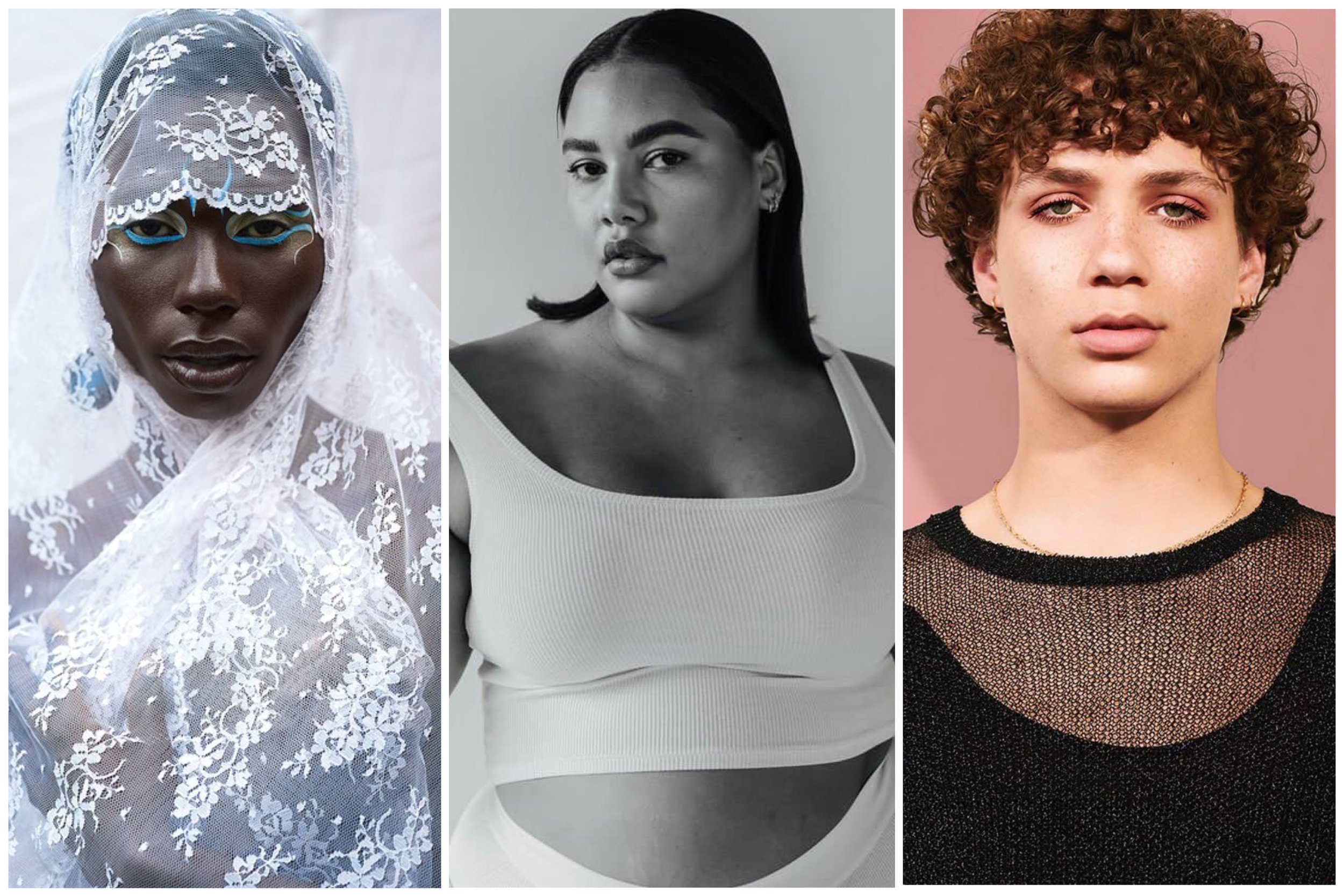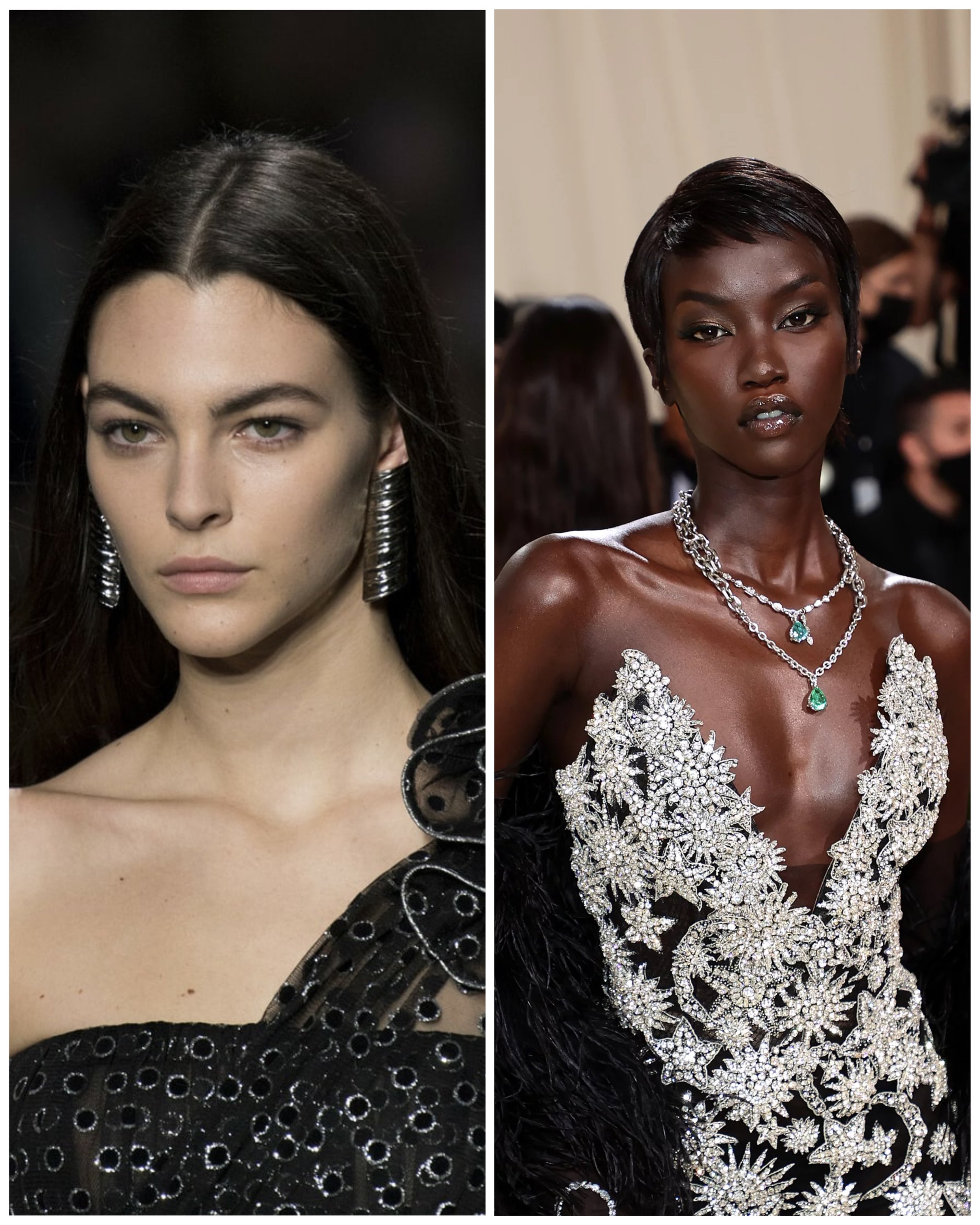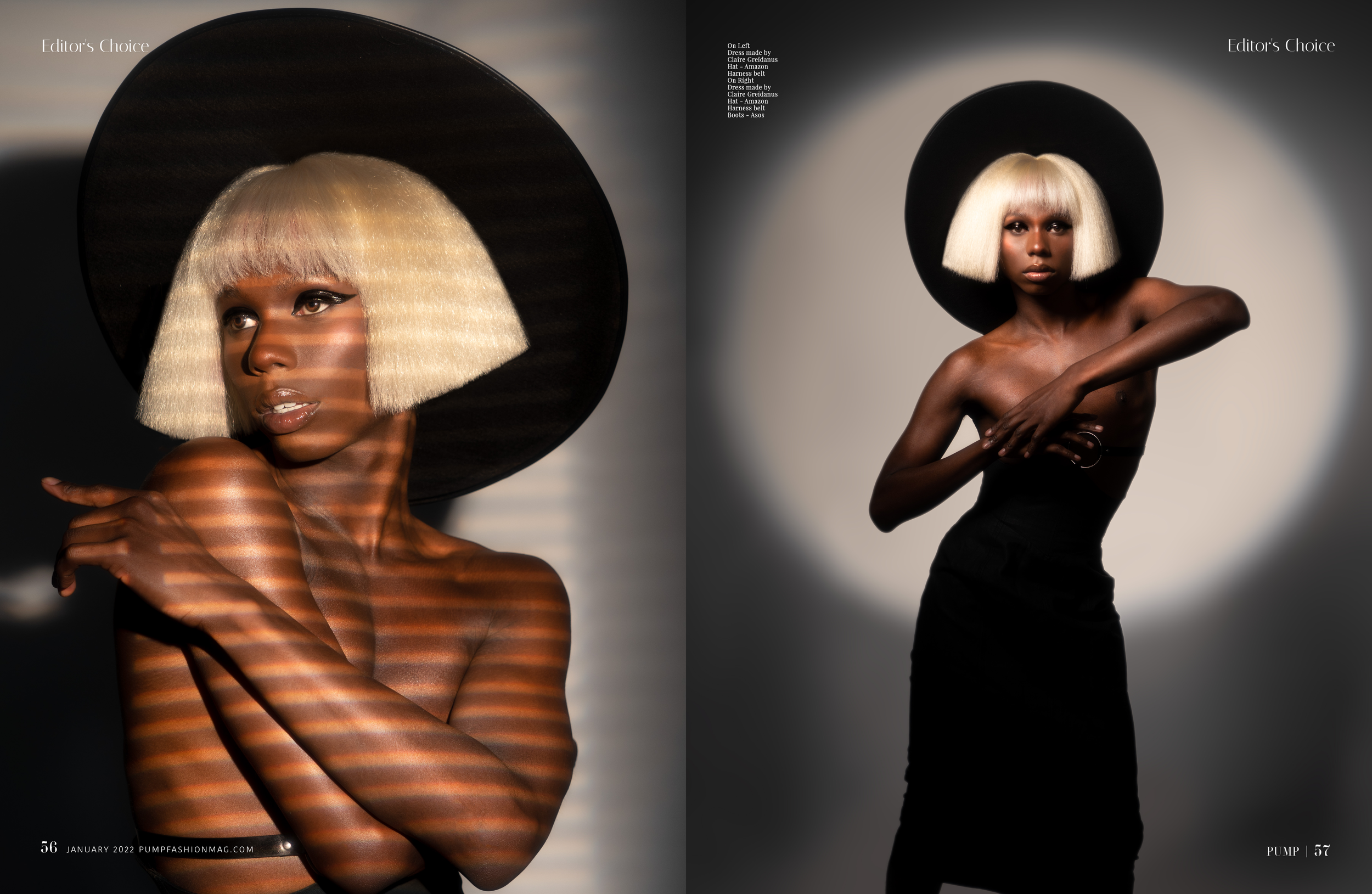So, You Want to Be on Top? Models Weigh in on The “Nepo-Baby” Debate & Share Their Stories
No silver spoon or Karl Lagerfeld handholding involved.
Source: Collage made by author.
Models: Jay Divine, Cassandra Cox, and Jaydon Harvey.
Lily-Rose Depp, the Chanel muse and daughter of Johnny Depp and Vanessa Paradis, made headlines after a recent interview with Elle. While promoting HBO Max’s forthcoming series The Idol, the December cover star tried to set the record straight about the nepotism allegations surrounding her career.
Two of the industry’s most sought-after and successful models, Vittoria Ceretti and Anok Yai, kicked off the “nepo-baby” debate on Instagram, but now, models Jay Divine, Cassandra Cox, and Jaydon Harvey are also weighing in on the nepotism discourse.
In the Elle interview, Lily-Rose Depp starts: "I’m familiar. The internet seems to care a lot about that kind of stuff," she says. "People are going to have preconceived ideas about you or how you got there, and I can definitely say that nothing is going to get you the part except for being right for the part."
Naturally, the status of her parents combined with her meeting Eurocentric beauty standards would make one assume that it's been smooth sailing in the industry, but she says otherwise.
Source: Felix Cooper
The Chanel ambassador further states: "The internet cares a lot more about who your family is than the people who are casting you in things. Maybe you get your foot in the door, but you still just have your foot in the door. There’s a lot of work that comes after that."
The term "nepo-baby"—short for "nepotism baby"—references the privilege that comes with being part of a wealthy, powerful family.
Over the past year, other Hollywood stars like Kendall Jenner, Hailey Bieber, and Zoë Kravitz have also been criticized for ignoring their privilege and having their careers handed to them.
Since Depp's cover story released on November 16th, some of the industry's biggest models have responded with their own perspectives on nepotism, shining a light on the realities of what it takes to break into the industry and be on top.
Italian-born Vittoria Ceretti, who is no stranger to the runway or global ad campaigns for Givenchy and Prada, was the first to break her silence on the topic. The Bazaar Italia cover model took to Instagram story to share her opinions on the matter.
“I get the whole ‘I’m here and I work hard for it,’ but I would really love to see if you would have lasted thru the first 5 years of my career,” Ceretti, 24, wrote on her Instagram and was captured by @Diet_Prada.
While Egyptian-born Sudanese American model Anok Yai also commented on the subject, adding that race also plays a major part in a model’s success, the conversation lacked inclusion and an overall wider perspective of just how much the industry favors one looks.
The obstacles one must overcome to see an ounce of success varies from model to model but having the “right last name” isn’t the first concern for these working models.
Jay Divine, 22, also known as The Divine Doll on Instagram, is a newly signed model to Ophelia Model Management in New York City, and they chimed in on the conversation.
“There’s a difference between working hard and having the accessibility [to connections] already there,” they say. “There’s no issue for them to open doors, they’re already in the room. There are extra steps for those of us who aren’t born into the spotlight.”
While many would like to pursue their dreams struggle-free, Divine knows that’s impossible and embraces the obstacles they may have to face when working towards big goals.
“I don’t mind struggling a bit to achieve my goals. It makes it that much more rewarding. And I haven’t had problems eating,” Divine laughs as the words come out, “but it is a very glamourous looking life, especially on social media and with runway shows, which doesn’t necessarily pay.”
Source: @thedivined0ll on Instagram
Even though, Divine caught the attention of Bottega Veneta back in 2021 while they were looking to cast their SS22 Show in Detroit, Michigan last October, they share the harsh realities of booking a runway show of that caliber.
They explain, “It was an amazing opportunity to walk in front of Daniel Lee, but I found out the next day that I wouldn’t be walking in the show.”
Divine continues about the miscommunication that can happen under modeling management, especially if they don’t know how to market a model’s look.
“It’s crazy because I got fitted in the look and saw the show, and on Vogue Runway, you can see the model they chose to wear the look, and the person they selected, he had the same name and hairstyle (at the time) as me. I was gagged,” Divine exclaims thinking back to what happened last year.
As devastating as this can be, the modeling industry is a last-minute one, so models must be prepared for anything. It also warrants a good lesson for how not to take matters personally but rather professionally. How one model handles a situation like a last-minute casting change, can make or break future castings.
“You don’t say you’re walking the show until you walked the show. I didn’t take it personally—you can’t in this industry, but it was a lesson learned,” Divine states matter of fact.
Walking in any major Fashion Week is a huge deal for any model, but it’s a hard-to-come-by opportunity prefaces Cassandra Cox, 27, who is signed to Wilhelmina LA. “I would love to do more editorial or even runway work. It’s more fun, but that part of the industry is very behind still. There are only like a few girls in rotation, you know Paloma Elsesser and Precious Lee, but there’s space for more. You have to fight for it,” Cox says.
Source: @goodamerican on Instagram
Cox was 23 when she was scouted on the streets of New York and at a pivotal point in her life. “I got signed on a whim,” she recalls. “I was in my last semester studying PR and human rights, and I had no idea what it was that I wanted to do. When this beautiful woman told me I should model and invited me to a casting call at Wilhelmina, I went for it.”
Though, it wasn’t an easy process to get signed. She explains the logistics of not living in a major city when pursuing modeling can affect the chances of signing with an agency.
“I’m originally from San Jose, so when they [Wilhelmina NYC] directed me to their LA office, I had to fabricate my current living situation to say I was in LA since it’s such a far drive. Immediately, once I got the good news, I packed up everything and moved to LA,” Cox says.
Similarly, London-based Jaydon Harvey, 21, shares that he was also scouted unexpectedly at age 17 after taking on several hair modeling jobs for fun. A photographer approached him one day on set about a casting call at Profile Models, and he ended up going on a series of go-see, much like in America’s Next Top Model, before signing with them.
“I went to every single major agency in London, and they all bloody said ‘no’…followed by the same thing of them liking my look but not for them,” he says. Harvey explains that he’s not the typical male model build of broad shoulders and well over 6 feet, so it’s to be expected.
Harvey left his first agency after a year before signing with Phoenix Model Management. He does work regularly with ASOS as well as Adidas and Calvin Klein. When he’s off-duty, he’s working as a freelance photographer for musicians and doubles back on his work as a model on his TikTok and Instagram platforms (@jaydon.harvey).
Source: @calvinklein on Instagram
“I’m grateful that modeling and social media work well together. It’s not extra work for me, and it can bring in extra money while opening the door to attend events and meet new people,” he says.
Despite the many differences these models face in their careers, one thing among these models is agreed upon: no one blames any nepo-baby for their upbringing.
“This is all she knows. She’s never had to experience anything else,” Cox points out. “So, it’s not a question of whether Lily or any of them works hard. No one is saying that she doesn’t. No one is questioning her work ethic. It’s a matter of recognizing or acknowledging her privilege.”
She also notes one major requirement for any model pursuing runway: height. “She’s 5’2”! There’s no place for her in the high fashion world if she didn’t have her parent’s last name,” she exclaims.
Harvey cheekily counters Cox’s comment by imagining life as a nepo-baby: “If somebody was like ‘Okay, tomorrow you’re gonna wake up in Lily-Rose Depp’s body,’ I would be over the moon—I love her, I think she’s so cool. It sounds like being a nepo-baby would be so much fun in so many ways,” he says.
Source: @jaydon.harvey on Instagram
“But I also think that a lot of nepo-babies can be so detached from reality in so many ways. It’s not necessarily their fault, but it can be really hard to grasp the concept of working from the ground up if you never had to,” he says. “They try to understand, but it’s difficult to grasp that concept. When you’re born into something, you don’t know otherwise.”
Giving the Chanel model the benefit of the doubt, Harvey encourages others to understand that there are levels to the industry.
“There are full-time models who are signed and every day they’re working on castings and shoots, but they’re probably still studying or working a part-time job so that they can live,” Harvey breaks down the differences.
“Then there are celebrity models, like Lily-Rose Depp or Kendall Jenner, who can pick and choose their jobs, and they get paid way more than full-time models who are signed to agencies. There’s definitely a divide between the categories (of models), but it’s the same as most industries,” he concludes.
Source: Jaydon Harvey
With that in mind, he continues to express how unrealistic hearing stories of celebrity models like Kendall Jenner cherry-picking or overly selective of jobs can be.
“When I first started modeling, something I heard from one of the agents was that the most powerful thing that you can say in modeling or in the fashion industry is ‘no’ because being able to say no to a job means that you got other jobs coming in,” Harvey tells.
He emphasizes that when a model can afford to say no, it must mean that a model has other options and enough faith in their work to say no to jobs that are silly or underpaid.
“There was a point where I couldn’t say no to anything. I needed the work. I needed the content. I needed the connections,” he states. “Even if it was for the most stupid shoot, and I was only getting paid 10 pounds for the whole day, I took it. But when you’re really starting, you just take everything as a blessing.”
Cox agrees, simply stating, “It’s the “happier here” industry.”
She continues to say, “I don’t have the luxury to pick and choose jobs—most of us don’t. How can you turn down money when you don’t know when it’s coming in next?”
The industry is uncertain, and she explains how this also leads to inconsistencies with payouts for jobs. “I have a job that I haven’t been paid for from last September,” Cox exclaims, “and I don’t know if I’ll ever be paid for that job.”
Source: @alannagilbertphoto on Instagram
“If you have the money and means, modeling is easier, especially when you can live in between cities. It changes the game having an apartment in New York and somewhere else. I know girls who stay in model housing and pay $1500 to $2000 to stay in a house with four other girls. It’s not that glamorous,” she reiterates that the real privilege is choosing when a model works.
Cox works extremely hard to make modeling her main source of income. In the past, she did work for Savage Fenty, Good American, Ivy Park, and Nike just to name a handful, proving that it’s not incredibly important to have a huge Instagram following to book big jobs.
“I’m not a person who likes attention. I have—what, four thousand followers on Instagram? I don’t want to be famous. I want to be successful. Yes, not having a huge social media presence can hinder some jobs and rates, but fame is not what I’m after,” she says.
Source: @weareivypark on Instagram
Her Instagram, @casscox, primarily highlights her work. While she knows that social media plays a big part in modeling today, especially regarding E-Commerce work, she wants nothing to do with internet fame or the backlash that may come from internet trolls.
“It’s hard being a curve model. As much as they love you and what you represent, you get double the hate,” she says.
While commercial booking may come easy to one model, it poses problems for another. It’s clear that queer representation in the modeling industry is often reserved for more editorial work, but after the release of Beyoncé’s latest album, “Renaissance,” there’s hope for more paying opportunities in the industry.
“With Renaissance shedding light on Ballroom culture and Black culture and Queer culture—all intersectionally, it is opening a space commercially and editorially for more Black-trans and Black-queer people in the industry,” Divine says.
They applaud Beyonce for her album and the visuals that came from the “Summer Renaissance” advertisement with LVMH-acquired luxury jewelry brand, Tiffany & Co.
Source: @tenbrism on Instagram
“I don’t see myself as a niche. I know people see me as one and with my placement in the industry, but I’m me. So, I think with this increased visibility, there will be a space for all people,” they optimistically say. “I won’t have to be categorized for shoots only surrounding pride. It doesn’t have to be the pride editorial. I’m more than my identity and representing my community.”
Tying into what Cox and Harvey exposed about the inner workings of industry, Divine admits candidly, “I’m very editorial, but we all know commercial is where the money is, chile, so I’m trying to become more malleable and build my book.”
Source: PUMP Magazine
In the meantime, Divine is also working as a fashion assistant at Highsnobiety, finishing his thoughts by saying, “It’s great exposure to work on set and with other models. You learn a lot from others, and again, it’s all about finding a way to be in the room.”












